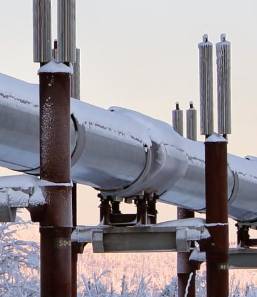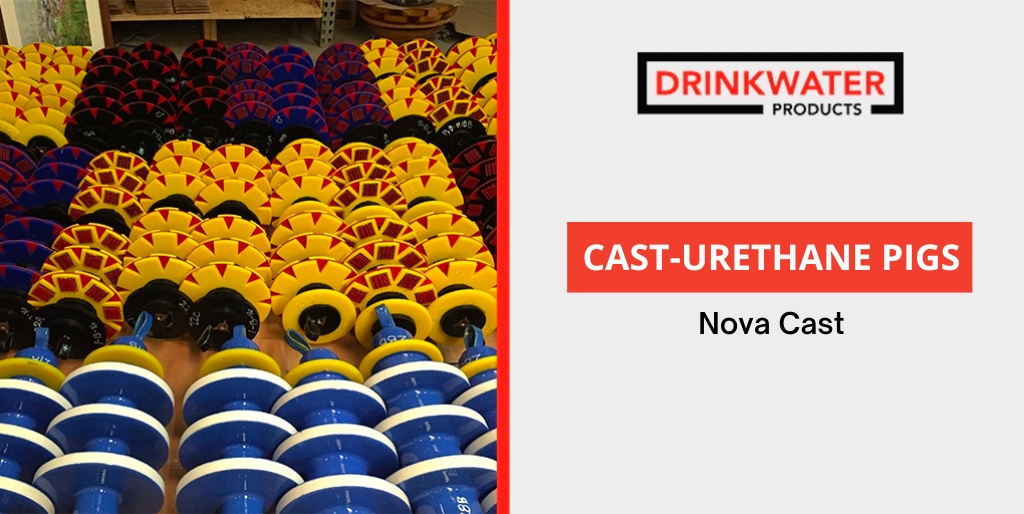Advantages of Pigging in Piping and How it Works
 The concept of pigging in piping refers to the use of devices known as pigs to clean pipelines and inspect their condition. This process doesn't stop the flow of product in the pipe. Pigs are used for a lot of industries like oil and gas, lube oil, chemical plants, food and pharmaceuticals. Choosing pipeline pigs for a given application requires a lot of experience, which Drinkwater Products has.
The concept of pigging in piping refers to the use of devices known as pigs to clean pipelines and inspect their condition. This process doesn't stop the flow of product in the pipe. Pigs are used for a lot of industries like oil and gas, lube oil, chemical plants, food and pharmaceuticals. Choosing pipeline pigs for a given application requires a lot of experience, which Drinkwater Products has.
A product recovery pig (pipeline cleaning pig) is a sanitary projectile that removes remaining products from pipes and tubes after production cycles have been completed. Silicone pigs are ideal for cleaning pipelines and recovering products in the food, dairy, beverage, chemical, and home and personal care industries because of their excellent mechanical properties (elasticity, absorption, tear strength). Additionally, silicone is chemically compatible with most products.
The Pigging System increases product yields and cuts Clean-in-place (CIP) costs by recovering the residual product left in processing lines after cycles. Eliminating leftover products through pigging in piping also cuts down on cleaning time. The time, water, and chemical savings help offset the cost of the recovery system.
The Pipeline Pigging Process: How Does It Work?
The main purpose of pigging in piping is to ensure that the pipeline is clean and free of obstructions. In order to facilitate easy movement and efficient cleaning, pigs are usually cylindrical or spherical. In moving along the pipeline, the pig may be able to detect and remove build-ups, which can affect performance and increase energy costs, and cause corrosion, which may result in leaks and cracks.
Pigging systems are best suited for production lines that handle sticky, thick, or viscous products frequently. Viscosity is generally related to the amount of residue a product leaves behind. As a result, cleaning is more efficient after pigging, since less product needs to be removed.
A dedicated line for each product isn't always feasible, so switching between products can take time and result in production downtime. The process of changing from one product to another does not require CIP cleaning (pigging in piping), so sending a pig is sufficient in those cases.
Product recovery systems can also be retrofitted to pipelines. Our engineers can implement solutions specifically for your situation based on your processing variables.
Pigging in Piping: The Pipeline Pigging Process
To tightly fit pigs into pipelines, a pig trap that is typically oversized is used.
The pig is then caught in a similar trap or receiver at the end of the pipeline once it has traveled the entire length.
Unlike squeegees, pigs use force air, nitrogen, or water to push products through pipes instead of a wire. In either case, the product may be pushed to the end of the line or, if necessary, returned to the holding tank.
Processing engineers specify projectile design according to:
- Viscosity of the product
- Size of the system line
Installation is not likely to disrupt normal processes. In order to determine the potential impact of valves or instrumentation in line and size transitions that can impact recovery, process engineers can assess existing lines for potential obstacles, such as welds and dents.
In some cases, operators can be trained and use the system within a few minutes depending on the design of the control box.
Basic one-way systems automatically turn off the air when a projectile reaches the sensor at the end of the piping. At the pipe outlet, the pipeline pigs are held in the catcher until an indicator light illuminates. Automated return cycles do not require removal of pigs from the catchers. They retrieve the pigs from the launch location by activating the return cycle on the system control screen. Operators can then pull the pig for inspection after it has been launched.
An end-to-end pipeline results in the air being automatically shut off whenever the projectile reaches the end. Broken or torn projectiles can be cleaned and recovered more easily.
Using smart pigging, pipelines can be cleaned and inspected without shutting down product flow. It also allows inspectors to inspect a pipeline completely without having to go down the full length of it. Additionally, companies save both time and money by combining cleaning and inspection services at the same time.
An air control panel automatically turns off the air when the projectile reaches the sensor at the end of the piping in a basic one-way system. Once the indicator light is illuminated, the projectile can be retrieved from the catcher. The pipeline pig need not be removed from the catcher at the pipe outlet during an automated return cycle; instead, the operator activates the return cycle on the control screen to return the pig back to the launching location. After the pig has been launched, operators should remove it for inspection.
Product recovery projectiles should be inspected after each use for cracks and tears that are often caused by the surfaces of products or pipes. When cracked or torn projectiles are replaced, recovery and cleaning of products is improved.
A smart pigging inspection has many advantages over traditional pipeline inspection methods. In this way, pipelines can be cleaned and inspected without interrupting product flow. A pipeline can also be thoroughly examined without sending inspectors the whole way down its length. Last but not least, it offers both cleaning and inspection services simultaneously, saving companies time and money.
Featured Pigging Product

